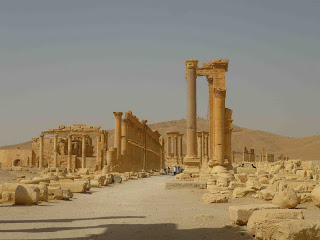I've done it, I’m going to the Middle East. I have booked a flight to Istanbul leaving in late September, from which I will travel across Turkey to Damascus to Beirut with a friend. The initial idea of this trip began in a place where all good ideas in the history of man have been discussed, a Scottish pub. When discussing life after university, the idea came into my head that I should spend some time in the Middle East for two reasons:
a) I have not been to the Middle East at all, and
b) I do not speak Arabic very well.
Both these issues I felt could haunt me in future years as a student of Islamic and Middle Eastern Studies with difficult questions such as "oh I suppose you must speak lots of Arabic" and "what's the Middle East like, I'm guessing you have been?" So it rectify this potential social awkwardness I have decided I should 'get my feet sandy' and take the plunge into the Arabic world. So on the 29th of September I am starting at the edge of Europe, before spending just under three months on the 'other side'. I have been passing the time of recent weeks by investigating the countries that I hope to be traveling through. Instead of writing lots and lots about each country, I have given five key facts about each country.*
Five things you need to know about Turkey:
1. It is technically a secular country.
2. Istanbul is built on two continents.
3. Tradition in Turkey says that a stranger at one’s doorstep is considered "God’s guest" for at least three days.
4. What happens after three days?
5. The oldest tin mine was found in Göltepe, 60 miles south of Tarsus.
Five things you need to know about Syria:
1. Its official name is The Syrian Arab Republic.
2. Syria gained independence from French control, on 17th April 1946.
3. Damascus has been inhabited for over four thousand years, making it the oldest continuously inhabited settlement in the world.
4. Syria was part of the Ottoman Empire from 1516 until the end of World War I.
5. In 1930, the zoologist Israel Aharoni captured a mother golden hamster and her litter of pups in Aleppo, Syria. Recent mitochondrial DNA studies have established that all domestic golden hamsters are descended from one female, probably the one captured in 1930 in Syria.
Five things you need to know about Lebanon:
1. 40% of the Lebanese people are Christian.
2. There are 3.5 Million Lebanese in Lebanon.
3. There are around 10 Million Lebanese outside Lebanon!
4. Lebanon is the only country in the Middle East that does not have a desert.
5. In springtime, on the same day, you can ski in the mountains and/or swim in the sea.
*These facts may not be 100% accurate!











